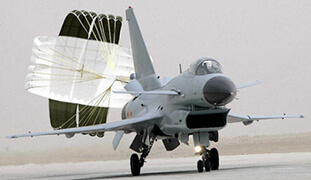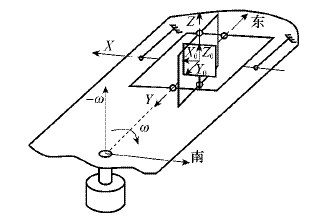Inertial navigation system(INS) sensor solutions
At present, inertial navigation system can be divided into two categories: platform-based inertial navigation system and strapdown inertial navigation system. Their main difference is that the former has a physical physical platform. Gyroscopes and accelerometers are placed on a gyro-stabilized platform. The platform tracks the navigation coordinate system to achieve velocity and position resolution. Attitude data is taken directly from the platform’s ring. In the strapdown inertial navigation system, gyros and accelerometers are directly attached to the carrier. The function of the inertial platform is done by computer, so it is sometimes called a “mathematical platform.” Its attitude data is calculated. Inertial navigation system has a fixed drift rate, which can cause errors in the motion of objects. Therefore, long-range weapons usually use timing commands, GPS, etc. to correct the inertial navigation system to obtain continuous and accurate position parameters. For example, strapdown inertial navigation + command correction, satellite positioning/inertial navigation system combination (GPS/INS), and most launch vehicles use platform-based inertial navigation, etc.
Modern high-precision inertial navigation systems place high demands on inertial sensors such as gyroscopes and accelerometers, because gyroscope drift error and accelerometer zero offset are the most direct and important factors affecting the accuracy of inertial navigation system. The factors, therefore, how to improve performance of inertial devices and improve the inertial components measurement accuracy, especially inertial grade gyroscope‘s measurement accuracy, has been the focus of inertial navigation research. The development of gyroscopes has gone through several stages. The initial ball-bearing gyro has a drift rate of (l-2)°/h. The air floatation gyro, liquid floatation gyro, and magnetic float gyroscopes developed by conquering inertial instrument support technology can achieve an accuracy of 0.001°/h. The accuracy of electrostatically supported gyros can be better than 0.0001°/h. Since the 1960s, the development of flexible gyros(DTG) has started and its drift accuracy is better than 0.05°/h, and the best level can reach 0.001°/h. Fiber optic gyro’s common level is 0.005°/h.
The inertial navigation system has developed flexible INS, fiber INS(such as tactical grade fiber optic gyroscope combine with tactical grade quartz accelerometer), laser INS(ring laser gyroscope combine with quartz accelerometer), and micro-solid inertial instruments. It has been widely used in aviation, aerospace, navigation, and land, depending on the environment and accuracy requirements, all aspects of maneuvering. Among them, gyroscopes and accelerometers are indispensable core measurement devices in inertial navigation systems. Usually MEMS accelerometer and MEMS gyro make up MEMS INS, and other INS system is mostly composed of quartz flexible accelerometer and different gyros. Comprehensively comparing price and performance, SINS composed of fiber optic gyros and quartz plus meter will become the mainstream trend in the future.
For more information, please contact info@sennavs.com


